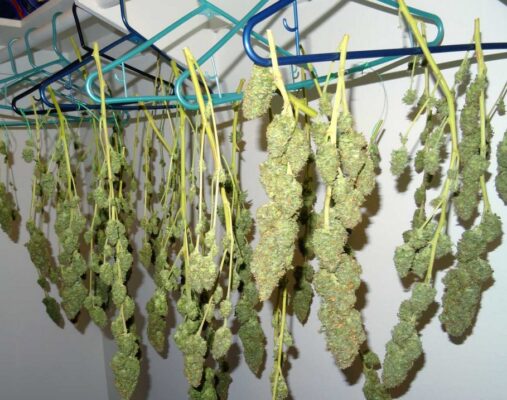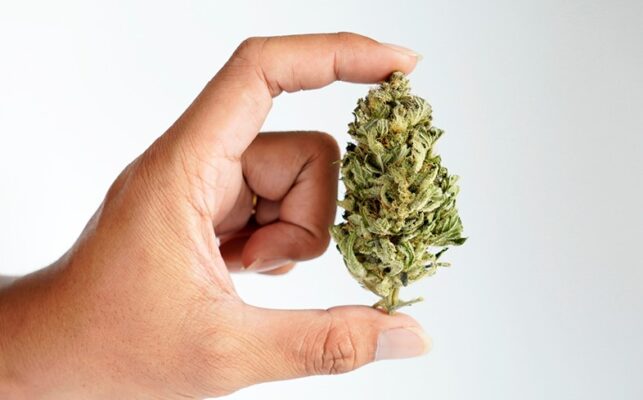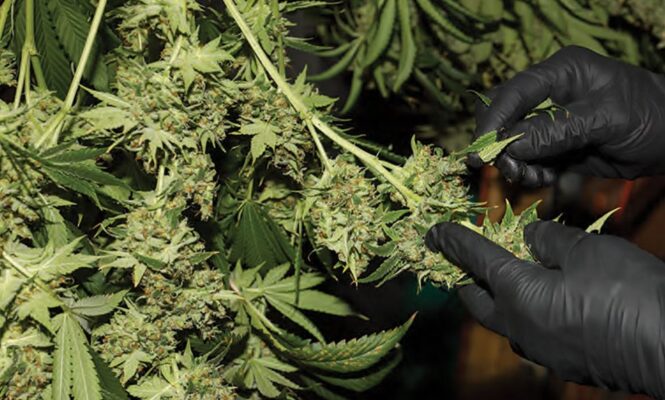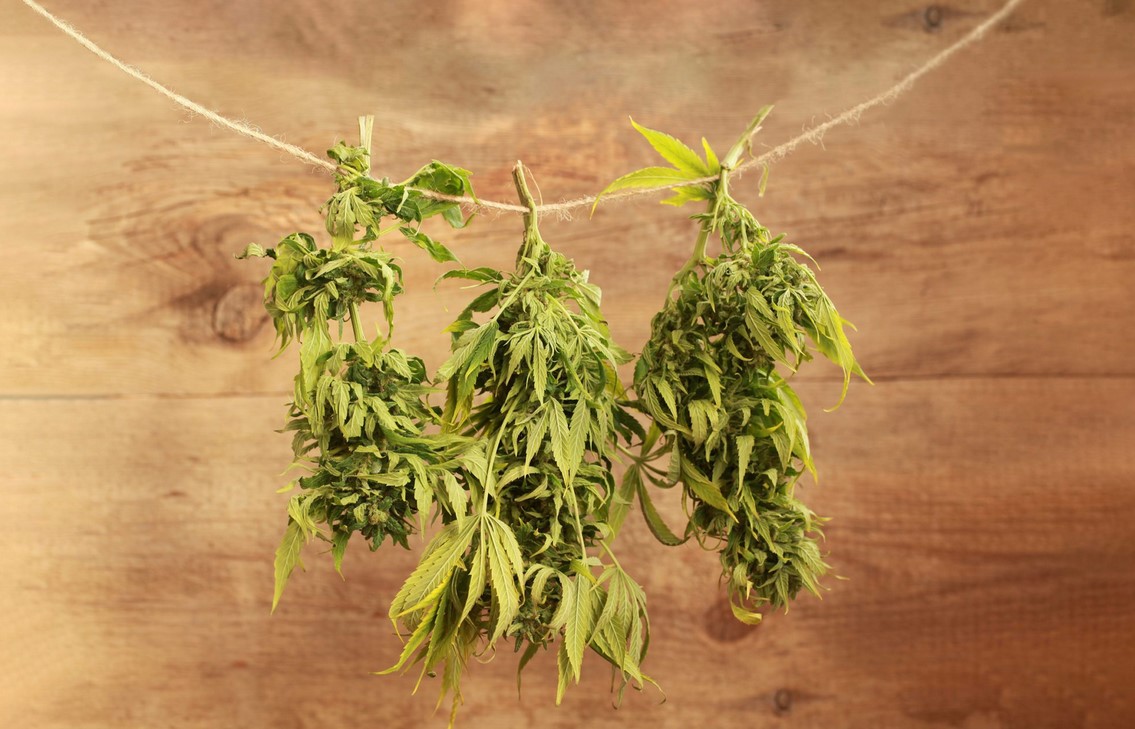Non classé
How to Dry Weed
After harvesting marijuana plants, proper drying and curing are required for buds. These procedures help to preserve and enhance the tastes of the plant by retaining terpenes and cannabinoids while eliminating chlorophyll and reducing the vegetal flavor of the plant.
The drying procedure is the first step in the drying process, which typically takes place outdoors—freshly harvested plants may lose up to 75% of their weight due to moisture loss, as well as branches, stems, and leaves that are trimmed away.
If dry trimming, the buds should be dried first and then trimmed; if wet trimming, vice versa. If drying the bud too quickly, the outside of buds will look dry but the inside won’t be; if drying for too long, mold could develop onthe bud.
After flowers are trimmed and dried, they must be cured in airtight containers. By doing this, it provides moisture preservation which stops the loss of flavors or aromas. As a result, the buds take on their full flavor potential.
How long does it take to dry cannabis?
Drying takes between 2 and 7 days. When plant material is wet trimmed, the procedure is frequently shorter since the bulk of the plant is removed first and there is less plant to dry. Hanging harvested plants upside down on a line or hanger whole plants or branches prevents buds from flattening or deforming as they dry.
When trimming wet, you’ll lay trimmed flowers on a drying rack. Bend a branch or stem after two days to see whether dried buds or branches are dry; if the stem breaks, that means the buds are completely dry. If they don’t break when bent, leave them be for another day.

How to set up a cannabis drying room
What makes for a good drying room?
A dryer room should be dark, with a temperature range of 60-70 degrees Fahrenheit and a humidity level of 55-65 percent. These numbers will be easier to maintain if you buy a low cost hygrometer.
Depending on your home or property, you may be restricted in what you can use as a drying room. Be aware that controlling temperature and humidity in big rooms might be difficult. Also, be aware that the area will have a marijuana odor. Make sure the location you pick isn’t subject to significant swings in temperature and humidity.
If the humidity is too low, a humidifier or air conditioner may be required. If you’re waiting an excessively long time for your buds to dry in your area, try changing the temperature or humidity levels to assist with the drying process.
How dark should a drying room be?
To ensure your cannabis is not degraded by UV rays from sunlight, keep it in a dark space. If you don’t have a light-tight space, cover your buds.
But check on your buds every so often–too much light exposure can expedite their drying process.
Cannabis drying room equipment
- Drying rack or line to hang buds for drying
- Hygrometer to measure temperature and humidity
- Fan
- AC unit (optional)
- Dehumidifier (optional)

How to hang dry buds
Hang drying buds is more time consuming but needs more room. It involves cutting big branches or suspending entire plants upside down. This saves time because you don’t have to “budge,” or remove individual buds from branches, but it will take up a lot more room because there’s so much plant hanging and drying this way.
Hang drying has several disadvantages, one of which is that buds may take longer to dry since there is more plant material, such as branches, stalks, and fan leaves.
How to dry buds without hanging on a line
You’ll need a flat rack to trim wet because you’ll end up with lots of trimmed individual buds. Flat racks are circular, have layers of mesh, and allow for great airflow. Check the wet-trimmed buds every 2-3 days by giving them a little squish. If they’re still too wet, leave them and check again tomorrow.
How to cure marijuana
When buds have been dried and trimmed, the initial quantity of moisture has been eliminated, and it’s time to cure your cannabis.
Freshly-harvested buds need to be cured before they can be enjoyed. Curing improves flavors and aromas, while also preserving moisture levels. The process usually takes two weeks to a month, during which time humidity levels inside the curing containers should remain between 55-65%.
Why curing cannabis is important
The curing process is often neglected, and it’s crucial to learn how to implement the ideal technique. During curing, moisture moves from the core of the bud toward the exterior.
The curing process alters the taste and quality of the cannabis smoke. multiple terpenes, which are responsible for marijuana’s signature smell and flavor, can disappear quickly at relatively low temperatures like 50°F. therefore, it is best to cure herbe slowly at lower temps to preserve those terpenes better than if you were to do a quick hot dry.
A properly cured cannabis product won’t mold, degrade in potency, or have any harmful effects. The curing process also helps to keep weed safe for long periods of time without worrying about mold growth or cannabinoid or terpene deterioration. Well-cured flower may be kept in an airtight container in a cool, dark location for up to two years with minimal loss of efficacy.
What does curing do to weed?
Curing aids in the completion of buds, improving their flavor. Chlorophyll continues to breakdown during curing, eliminating any vegetal flavor—without curing, marijuana would have a lawn-cutting taste. This reduction in chlorophyll makes buds more gentle and pleasant to smoke.
Equipment and tools needed to cure cannabis
It should be done in a room or space with a steady temperature and humidity—dank, humid basements or hot, muggy attics are not ideal. The area should keep the same temperature as the rest of the house and shouldn’t be too wet.
Because light can also destroy terpenes, it’s a good idea to have the ability to turn off the lights or cover jars so that light doesn’t get in.
To cure buds, you will need:
- Airtight jars
- Hygrometer (for each jar) to measure temperature and humidity
Curing cannabis buds
Place the trimmed buds in an airtight container. Most individuals utilize wide-mouth quart or half-gallon glass mason jars, but ceramic, metal, and wood vessels can also be used. Because plastic bags aren’t permeable to oxygen, they’re not ideal for curing. Also, you don’t want your marijuana to have a chemical aftertaste.
Gather your buds and place them in a container without smashing or compacting them. Next, seal the container(s) and store in an area that is cool, dry, and dark. In 12-48 hours, you will most likely notice that the buds have gotten slightly softer as moisture from the center of the bud rehydrates rest of it. If this doesn’t happen though, chances are you have over-dried your cannabis.
Humidity inside sealed jars should be between 55 and 65 percent. If you’re unsure, a digital hygrometer—which measures moisture—may be purchased for around $20 at any hardware shop.
If your stash is looking a little dry, you can perk it up by adding a humidity pack, like Boveda.
If your buds are too wet, open the container for a few hours or even an entire day to let them dry out before sealing it again. Make sure to check the humidity daily and leave the lid off longer if they’re still too moist.
Burp your buds
Open the containers once or twice a day for a few minutes during the first week of curing, regardless of humidity level. This is known as burping and releases moisture and oxygen from within the container.
If you detect an ammonia scent when opening a container, it indicates that the buds are not yet dry enough and anaerobic bacteria are eating them, resulting in moldy, rotting marijuana. Leave the lid off for a day before resealing it. Burp containers just once every few days after the first week.

How long does it take to cure cannabis?
Generally, your cannabis should be ready to give you a great experience after two to four weeks in containers. However, some people prefer to cure it for even longer – up to eight weeks or more – and depending on the souche of cannabis, it may even benefit from being cured for six months or longer.
How to store your harvested cannabis buds
With proper care, you can store cannabis for up to two years without much loss in potency. Just like wine or whiskey gets better with age when stored in a cool, dark place, the same is true for cannabis. between 77-86°F is the ideal temperature for storing cannabis.
Excess heat can deplete cannabinoids and terpenes, which take months to produce. When plant materials and essential oils become excessively dry, resulting in a harsh, hot smoke
Here are some tips for storing buds:
- Store out of direct sunlight in a cool, dry place
- Store in neutral containers, like glass mason jars
- Use hygrometers or products like a Boveda pack to monitor and control humidity levels
- Vacuum seal jars and containers to minimize oxygen exposure
- Keep distinct strains separate for each flavor profile, and label with a date—it’s pretty inconvenient to mix them up.
Temperature
Decarboxylation is the process of THCA converting into THC, and low temperatures slow this reaction. However, high temperatures ultimately degrade THC into CBN. Furthermore, warm air holds more moisture than cold air does.
Humidity
Maintaining humidity between 55-65% is key to preventing mold and mildew in your cannabis. Not to mention, it also helps preserve color, consistency, aroma, and flavor.
Light
UV radiation is highly damaging to both organic and synthetic substances, and cannabis will degrade over time as a result of UV exposure. Controlling temperature by storing cannabis in the dark may also assist.
FAQ
How do you cure and dry weed buds fast?
The drying, curing, and storing of cannabis is relatively straightforward. The slower you go with the dry and cure, the better it will taste and smell. Temperature and humidity can be controlled in a drying area using fans, air conditioners, and dehumidifiers for a smooth and uniform dry and cure.
What humidity should buds be dried to before curing?
Humidity should be kept between 55 and 65 percent, and the temperature range should be 60 to 70 degrees Fahrenheit.
Should buds be completely dry before curing?
Before curing your buds, ensure that they are not too dry; if they are too dry, the smoke will be harsh. Drying should remove most of the moisture, and a little bit more will be pulled out during curing.
How do you dry sticky buds?
On a drying rack or by hanging dry, it’s the same as with any buds. The amount of trichomes on cannabis flowers has nothing to do with their stickiness.
What does it mean when you burp weed?
When curing buds, the jar must be opened up every few days or so to allow moisture to escape and oxygen to enter—this is known as “burping.”
Is burping weed important?
Yes; every few days, moisture must be released and fresh air permitted in.
Will my weed taste better after curing?
Curing is a process that helps to remove the last drop of moisture from cannabis and break down chlorophyll, resulting in a smoother smoke. Curing can also enhance taste, flavor, and fragrance.
Should I dry cannabis with a fan?
Fans can be used to maintain temperature and humidity in a drying room, lowering temperatures if it’s too hot and increasing airflow. Humidity should be 55-65 percent, with temperatures ranging from 60-70 degrees Fahrenheit; if your drying space is within these ranges, you don’t need a fan; if it goes above those limits, you’ll want one.


